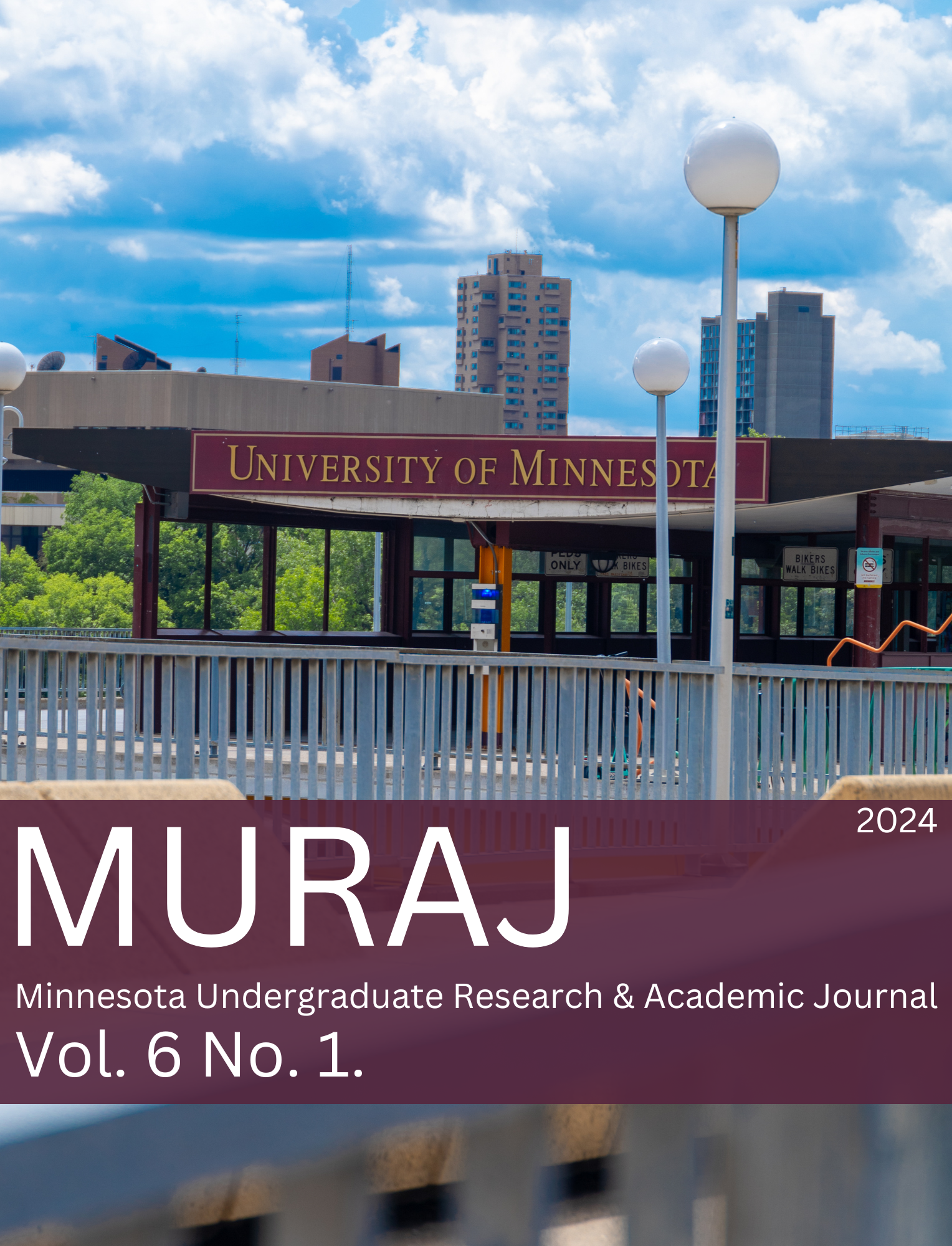Traffic Volumes Impact Sex Ratios of Painted Turtle Populations in Ramsey County
Main Article Content
Abstract
Road mortality is currently one of the biggest threats to freshwater turtle populations. Female turtles cross roads more frequently than male turtles in order to nest, meaning they are more prone to road mortality. Ramsey County is a particularly useful place to study road-induced turtle mortality due to its diverse landscape with a variety of traffic volumes, road densities, and wetland areas. Our goal was to determine the extent to which the sex ratio of Ramsey County painted turtle populations can be explained by the traffic volume of nearby roads. We also asked if these relationships differed with age and distance from habitat to the nearest road. We placed hoop traps in six wetlands, and sampled turtle populations from mid-May through early August. Wetlands near higher traffic volume roads were more likely to have a male-biased sex ratio. Female turtles were found across a greater range of wetlands near roads with higher traffic volumes and across a larger range of distance to nearby habitats. Additionally, sex ratios varied greatly between different ages, with most captured adults being female and most juveniles being male. None of these results were statistically significant, however. Future work should continue to investigate the relationship between sex ratios and traffic volume, as well as the sex ratios within age structures of populations. In order to obtain an adequate sample size, future research should have multiple trapping seasons.
Article Details

This work is licensed under a Creative Commons Attribution-NonCommercial 4.0 International License.

All work in MURAJ is licensed under a Creative Commons Attribution-Noncommercial 4.0 License
Copyright remains with the individual authors.

